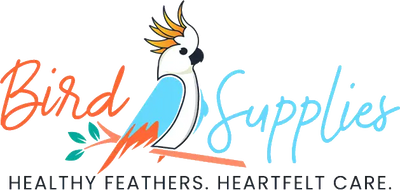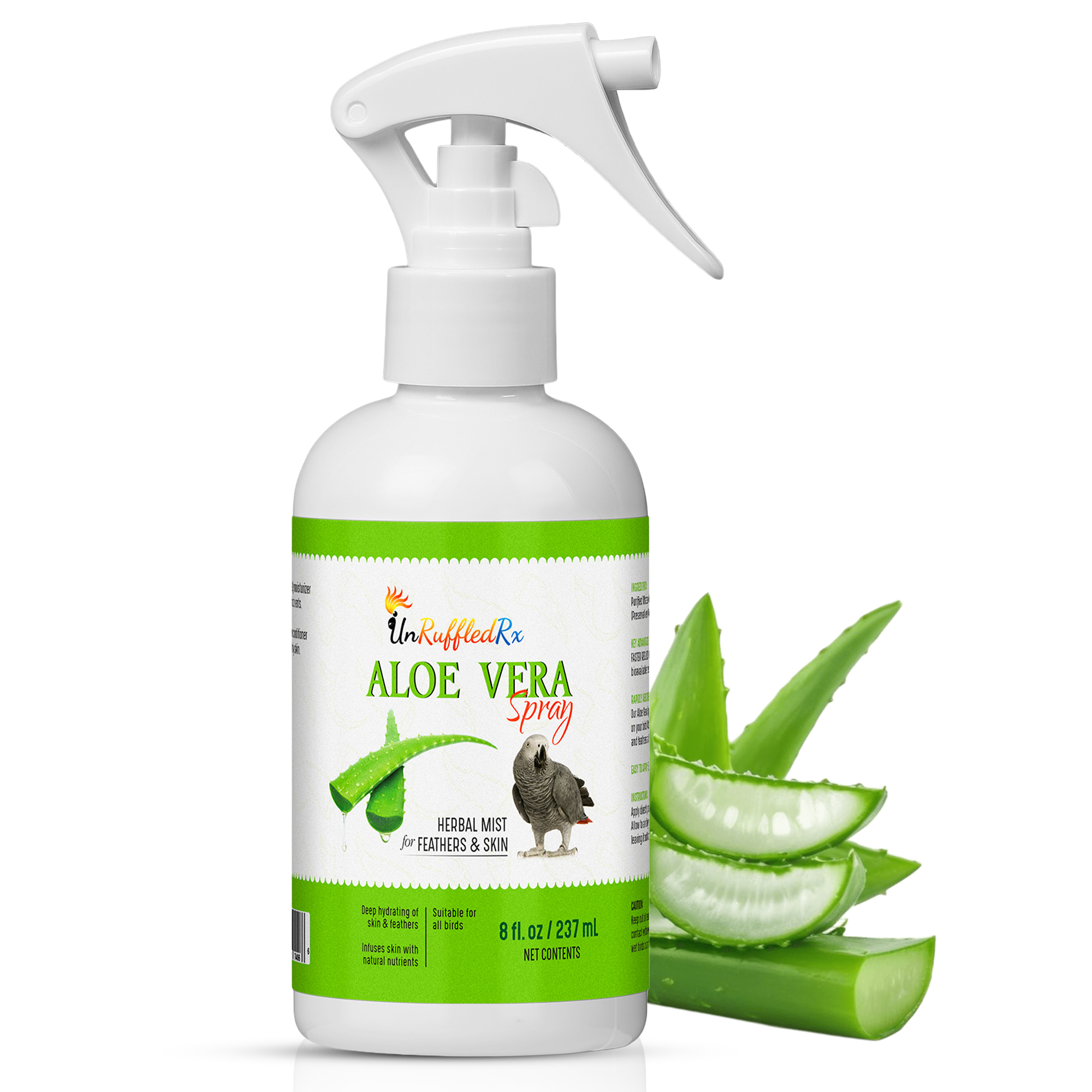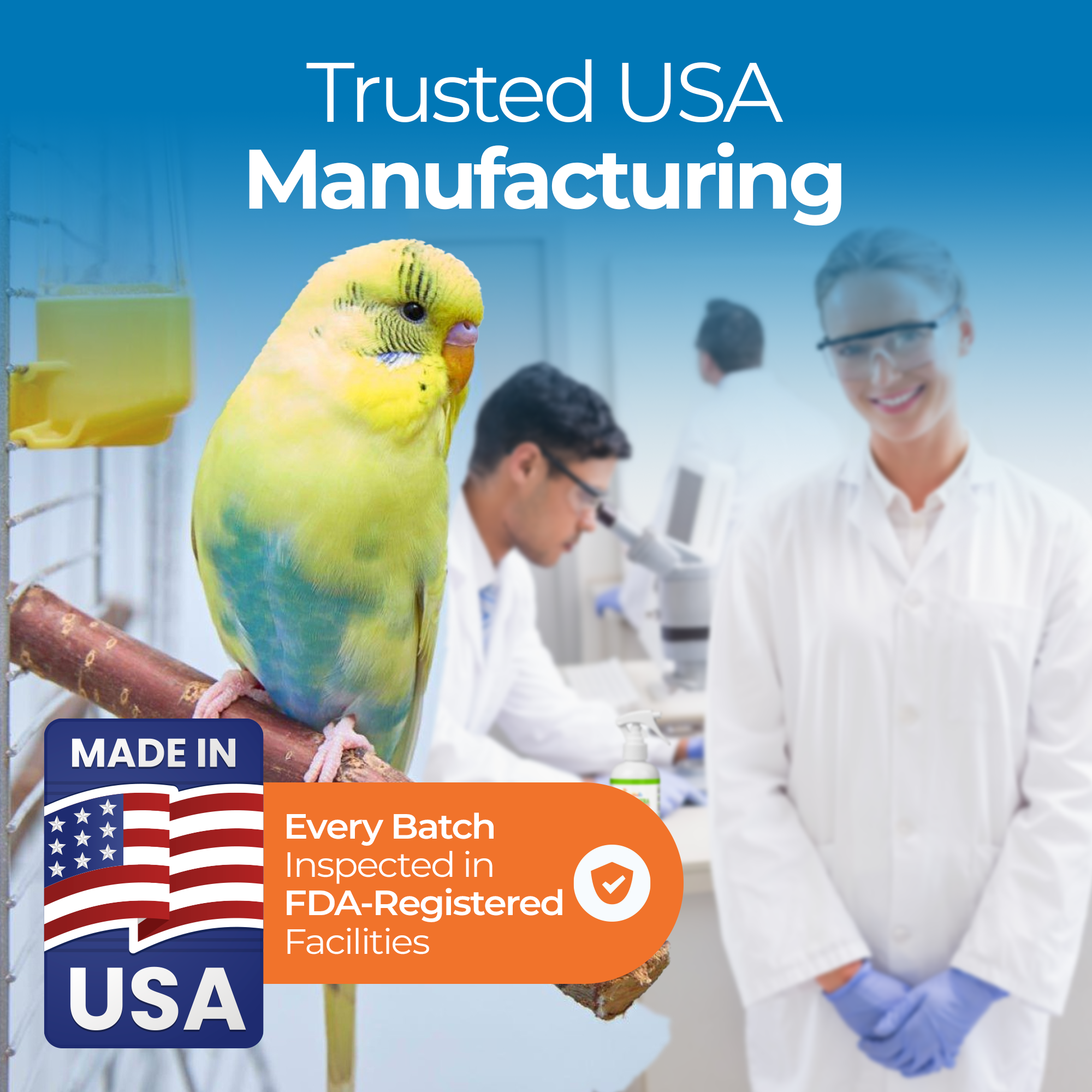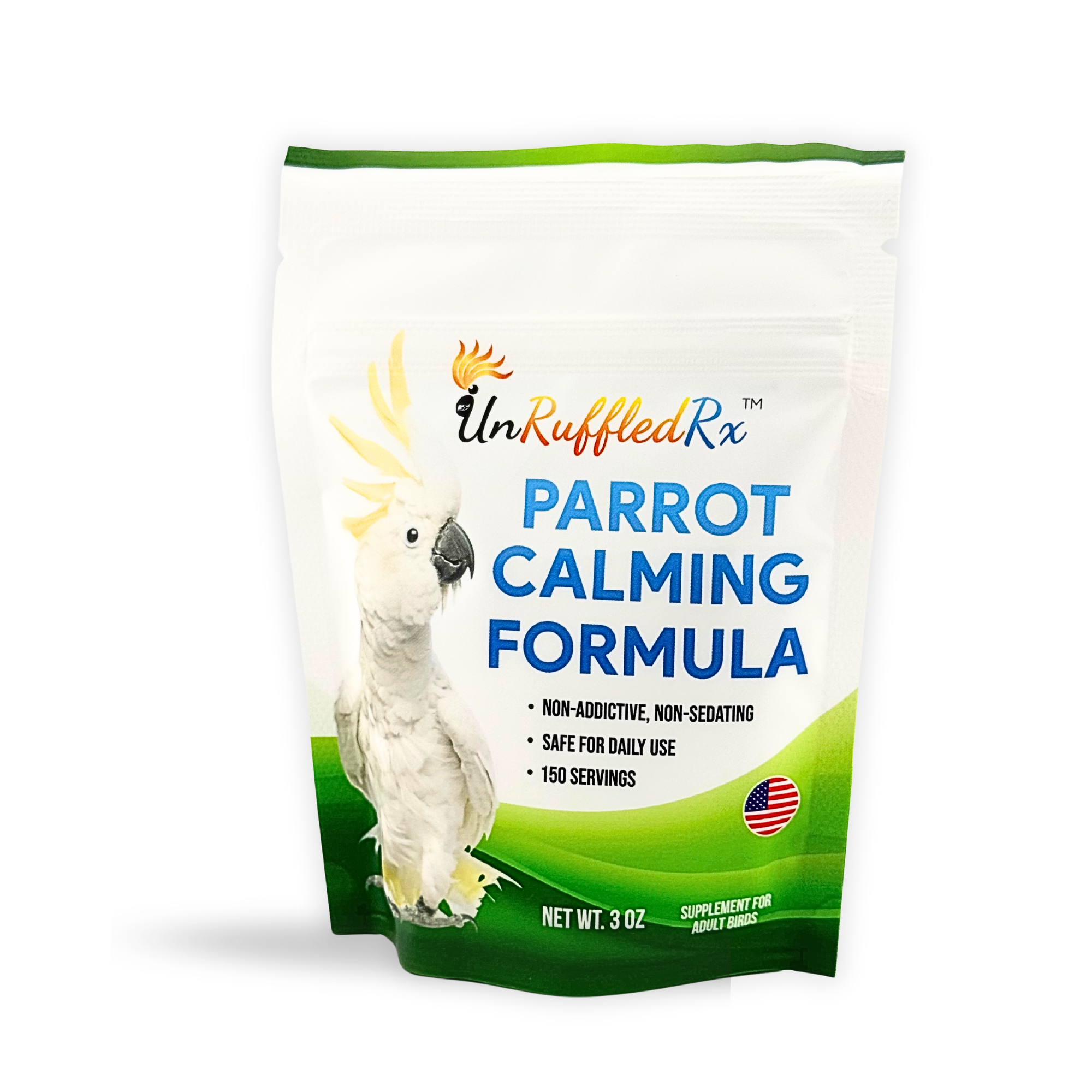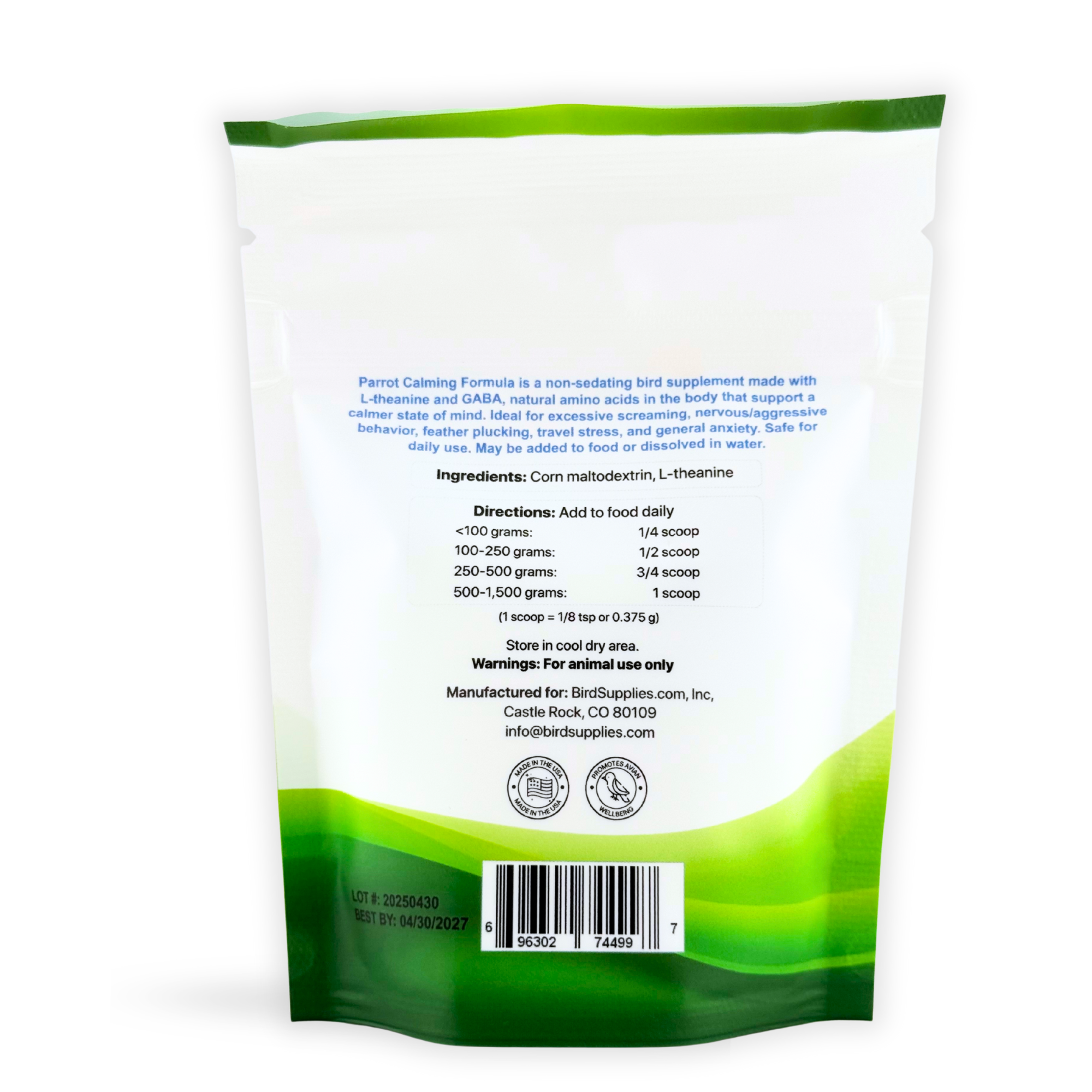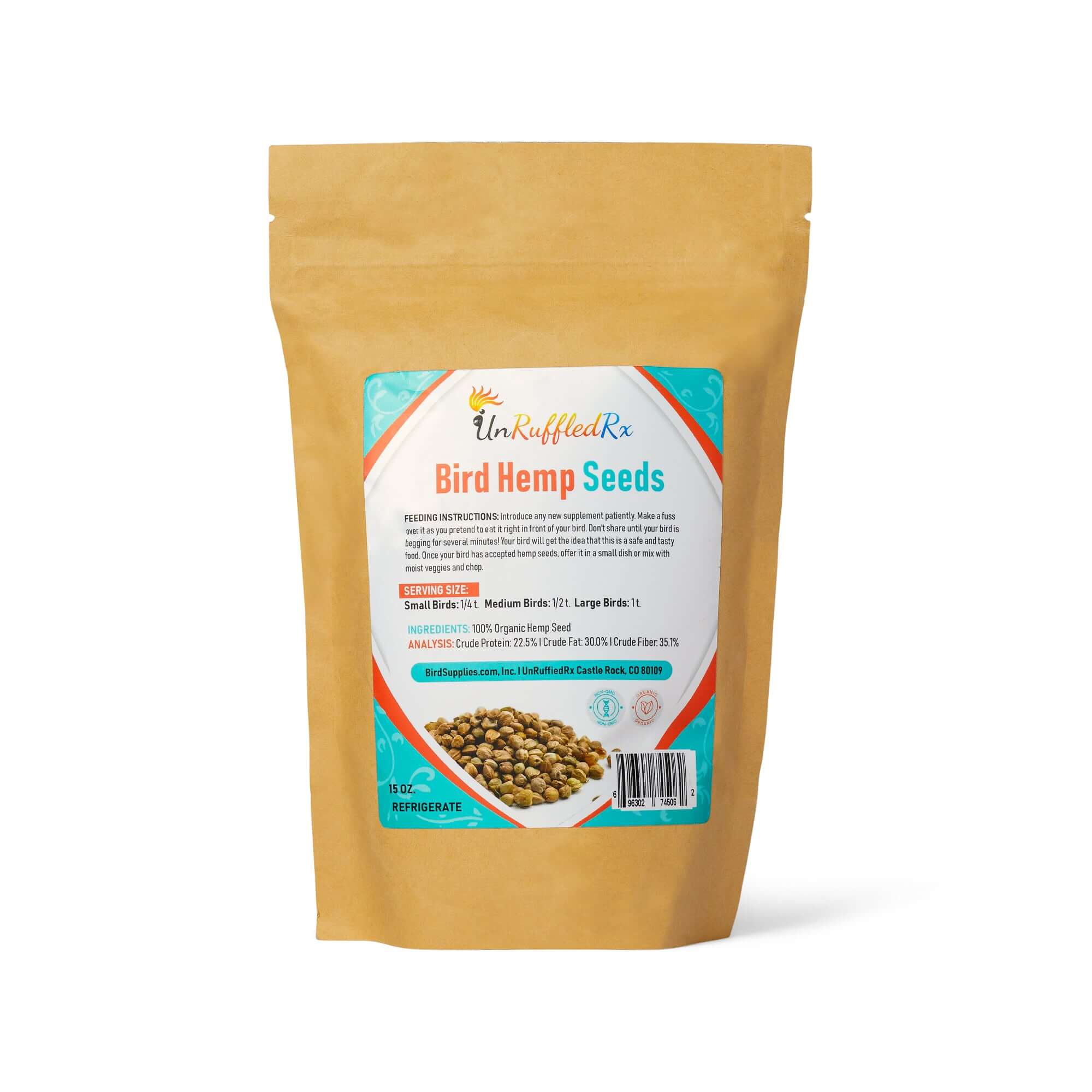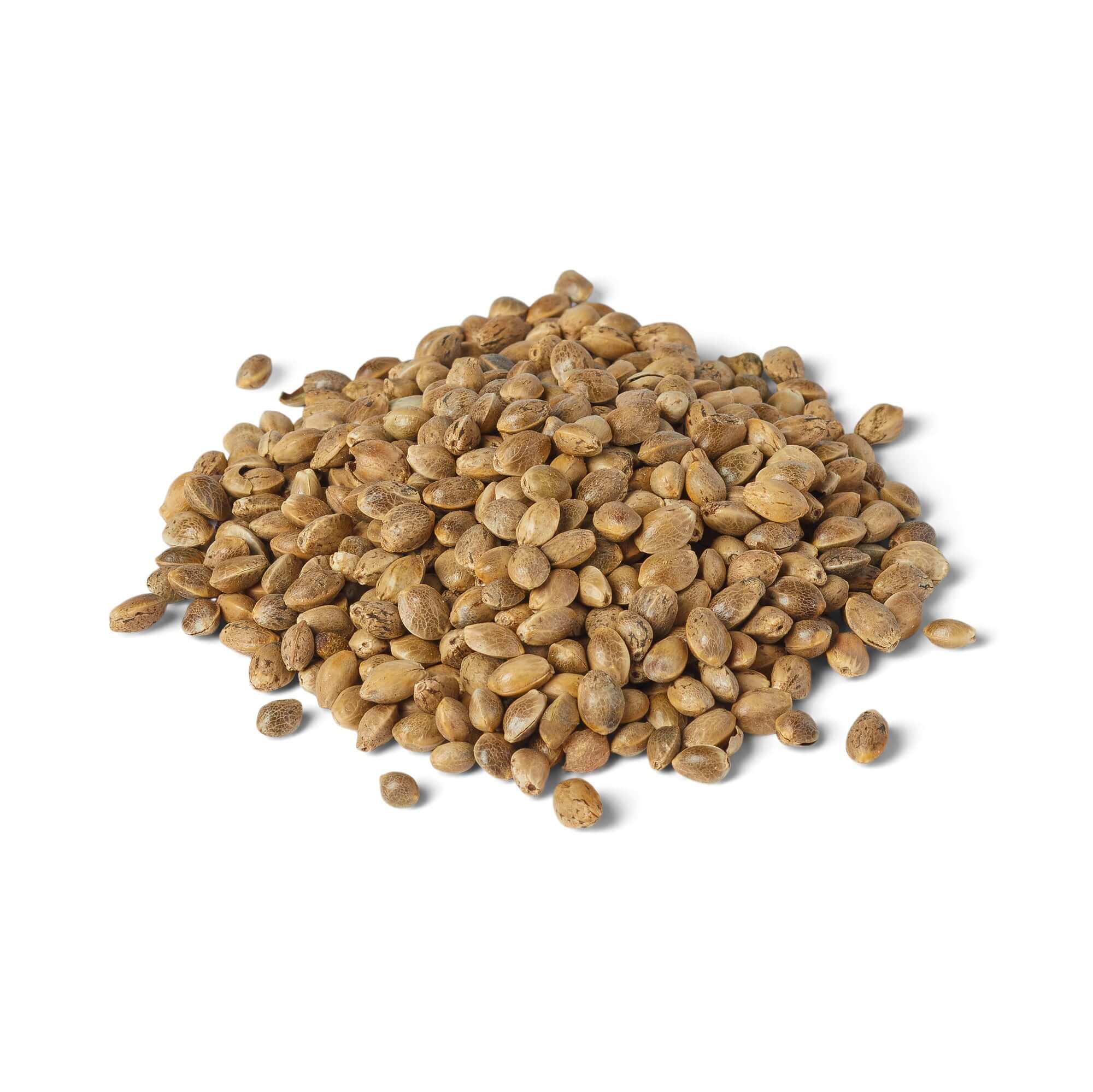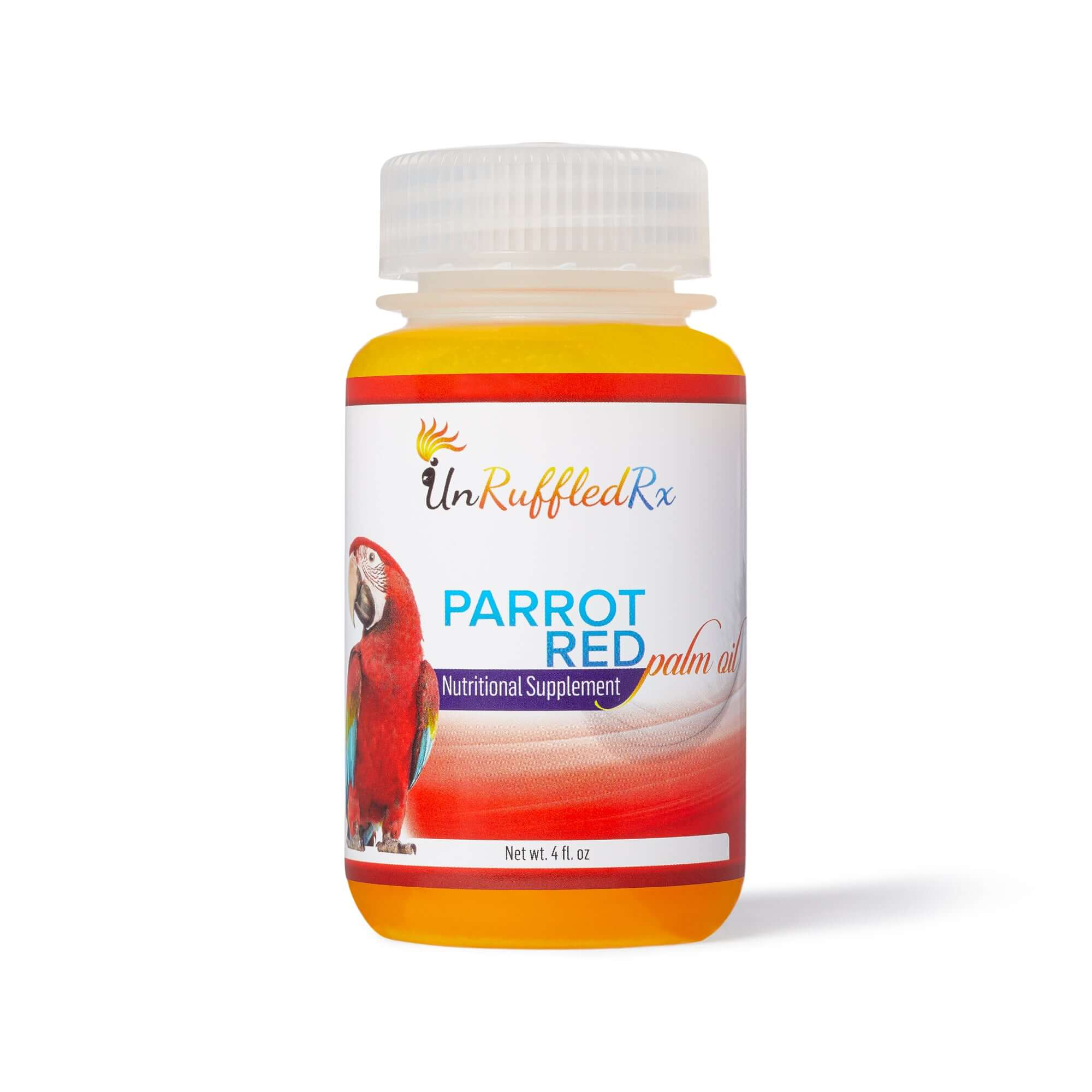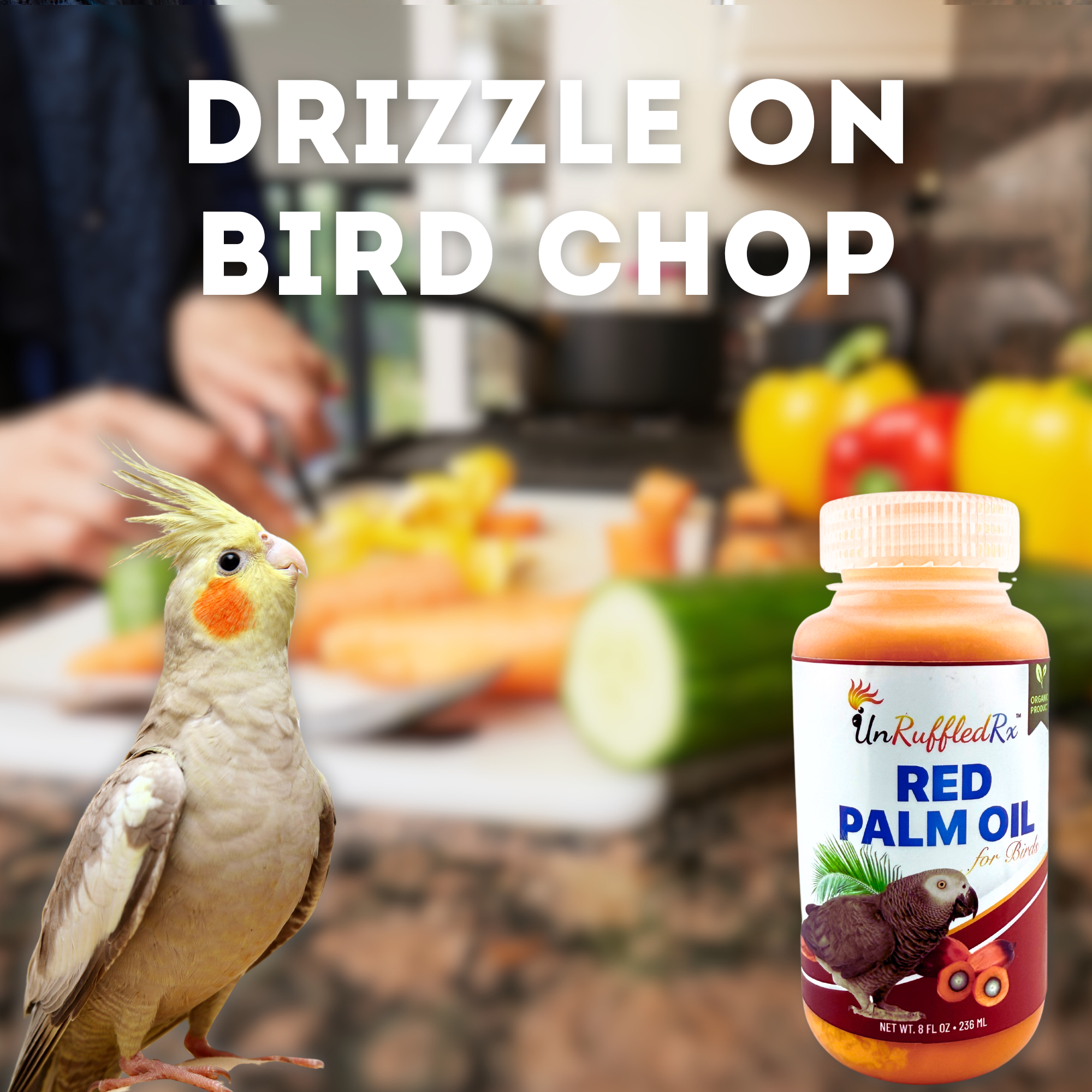Revised: 10/28/2023
Table of Contents
- The Dangers of Toxic Fumes to a Bird's Respiratory Tract
- Understanding the Risks of Heavy Metals in Bird Care
- Unlocking the Benefits of Play, Foraging, and Exercise for Your Bird
- Maintaining Healthy Humidity for Your Tropical Companion
- Managing Bird Plucking Feathers with Adequate Light and Sleep for Your Tropical Bird
A Cry for Help: Feather plucking in our cherished pet birds is a heart-wrenching sight, isn't it? If you've ever experienced the anguish of seeing your feathered friend in distress, you're not alone. Birds plucking their feathers is a very common problem.
The plucking can be a telltale sign of underlying issues, including stress, anxiety, and health problems. My mission with this post is to explore the crucial role that environmental health plays in this complex problem. I'll provide you with insights and actionable steps to help you understand how to create a healthier, happier home for your feathered companion. Let's dive in!
The Dangers of Toxic Fumes to a Bird's Respiratory Tract
Taking care of your feathered friend involves more than just providing a cozy cage and tasty meals. One vital aspect of bird care is ensuring the air your parrot breathes is clean and safe. Parrots, with their ultra-efficient respiratory system, are particularly sensitive to the quality of the air around them, and toxic fumes can spell trouble for their well-being.
Toxic fumes in the environment can make your parrot uncomfortable and, in extreme cases, be life-threatening. It's important to recognize the sources of these toxins and take steps to protect your parrot's respiratory system.
The Invisible Dangers
Captive parrots are exposed to a variety of airborne toxins every day, some of which may surprise you. One common culprit is aerosol sprays. These products release tiny chemical droplets into the air, and these droplets can land on your parrot's feathers, cage, or accessories.
When your parrot breathes in this air or accidentally ingests these chemicals, it can lead to respiratory distress and other health issues. So, it's crucial to be mindful of what you're spraying in your home.
Scented candles, overheated Teflon® or non-stick pans, heaters, and certain household cleaners also release harmful substances into the air. Even cigarette smoke and air fresheners can be problematic for your parrot. These airborne toxins can disrupt your bird's health and well-being, so it's essential to reduce or eliminate them from your home.
Tobacco smoke and nicotine are another source of toxic airborne pollutants. Cigarette or marijuana smoke can settle on your parrot's feathers, cage, accessories, and toys, leading to issues like brittle feather production. The chemicals in cigarette smoke, including nicotine, are harmful to birds. To ensure your parrot's well-being, it's best to refrain from smoking inside your home and always wash your hands thoroughly before handling your pet.
Guarding Against Hidden Threats
Debris in the bottom of the cage and in the bird room can foster unsafe fungal and bacterial growth, which may also become airborne and affect your bird's health. To combat this, make it a weekly habit to thoroughly clean the birdcage using bird-safe detergents. This simple practice can go a long way in maintaining a healthy living space for your feathered companion.
Actionable Step: Make your home a smoke-free zone and ensure proper ventilation. Use safe cleaning products that won't release harmful fumes, keeping your bird's breathing environment clean and toxin-free.
Daily Tasks
- Change soiled cage liners.
- Wash food and water dishes with soapy water. Provide fresh water & food.
- Perform a quick visual inspection to ensure toys and accessories are safe.
- Sweep the floor and surrounding area; wipe up splatters with Poop Swoop® wipes.
Weekly Tasks
- Scrape any dried poop off of the grate and clean the shelves it sits on.
- Thoroughly clean the cage tray and wash the shelves it sits on. d disinfectant.
- Clean the perches.
- Wipe down the cage with a bird-safe cleaner like Pet Focus.
- Run food and water bowls through the dishwasher (or give a thorough manual clean).
- Inspect, clean, and rotate bird toys.
- Use parrot-safe pest control products as needed.
- Wipe off food and poop splatters with bird-safe cleaner like Poop Swoop® wipes.
- Mop the floor and surrounding area with soapy water.
Monthly Tasks
- Wipe down the interior and exterior of the cage.
- Clean walls behind the cage.
Understanding the Risks of Heavy Metals in Bird Care
When it comes to the well-being of our feathered companions, it's not just the air quality that matters. Parrots are remarkably sensitive to something called "heavy metal poisoning." This might sound a bit technical, but it's essential to comprehend as part of responsible bird care.
The Culprits: Heavy Metals
Zinc and lead are the most common type of heavy metal that can pose a threat to your parrot's environmental health. But there are others to be wary of, like copper, lead, and iron. These metals can potentially cause what's called "acute metal poisoning" in parrots.
How Parrots Get Exposed To Heavy Metal
Parrots are curious creatures, and they sometimes explore their surroundings by using their beaks. This means they might end up mouthing toys or investigating things like chipped cage bars and other metal objects. Unfortunately, this can lead to them ingesting these harmful metals.

Photo Credits: Shutterstock
Recognizing The Signs of Heavy Metal Poisoning In Birds
Heavy metal toxicity can result in various health problems for your parrot. These could include neurological symptoms, issues with their stomach and digestion, and even serious harm to their liver and kidneys. So it's crucial to be aware of these signs and act quickly if you notice any of them in your bird.
The Link To Bird's Plucking Feathers
Surprisingly, chronic, low-level metal toxicity can be linked to a puzzling behavior in parrots: feather plucking. According to Hoppes (2022), metal toxicity is a common problem so if you notice symptoms like weakness, diarrehea, vomiting, weight loss, or blindness, schedule a vet visit right away.
Taking Action
Thankfully, there are steps you can take to protect your parrot from heavy metal exposure. Start by choosing a high-quality cage or, if needed, consider repainting a cage with child-safe paints to prevent chipping.
When it comes to toys, opt for those made by reputable U.S.manufacturers. Make sure that you can pronounce the name of the manufacturer if you buy from online marketplaces. Try to avoid ones with metal parts. Instead, go for natural or plastic toy hangers to keep your parrot safe
By understanding the risks of heavy metal exposure and taking preventive measures, you can ensure a healthier and safer living environment for your beloved parrot. Remember, environmental health is a key aspect of responsible bird care, and your feathered friend will thank you for it.
Unlocking the Benefits of Play, Foraging, and Exercise for Your Bird
Consider the Active Life of a Wild Parrot
Let's take a moment to imagine the daily life of a wild parrot. These magnificent birds cover miles in a day, soaring through the skies in search of different food sources. Once they arrive at a site, they dig, explore, and forage to find the variety of foods essential for their top-notch nutritional health. In fact, researchers inform us that wild parrots dedicate between four to ten hours daily foraging, in addition to the several hours they spend flying to their chosen food destinations.
The first step in “enrichment” is for the OWNER to learn what is normal and natural for the bird and then learn to accept that as a condition of owning a parrot...>
Now, let's look at your captive parrot. In comparison, it may be experiencing a lack of exercise and foraging opportunities. But there's good news: you can take steps to change that and enhance your bird's physical well-being.
Promoting Exercise and Foraging
Firstly, consider the space your bird has. A large cage and some time out of the cage on a play stand can inspire your parrot to get moving. This simple change can make a significant difference in your bird's life.
Next, let's talk about food. Instead of serving your bird's meals from a boring dish, create foraging stations throughout the cage. This means your bird has to put in a little effort to find its food. It's like turning mealtime into an exciting adventure!
And here's the best part: you can create these foraging activities with everyday household items. It doesn't need to be complicated or costly. Simple items can transform your bird's environment into a fun and stimulating playground.
By incorporating more play, foraging, and exercise into your bird's daily routine, you're not just improving its physical health but also enhancing its environmental health. Your feathered friend will thrive in this enriched environment, and you may even see improvements in behavioral issues, such as feather plucking. So, get creative and make your bird's life a little more exciting as a way to keep your bird from plucking feathers!
Maintaining Healthy Humidity for Your Tropical Companion
Parrots thrive in the lush, humid rainforests near the equator. These tropical environments are a far cry from the dry air found in many of our homes. So, if you're a dedicated bird owner, it's crucial to understand the importance of humidity for your parrot's environmental health.
The Right Humidity Level
Low humidity levels in your home can have adverse effects on your parrot's well-being. It can lead to dry, brittle skin and feathers. This, in turn, can result in the failure of the feather sheath to soften correctly. The discomfort caused by this can sometimes prompt your bird to engage in over preening and feather plucking.
To prevent this from happening, it's essential to provide an environment with the ideal humidity level. This helps your parrot stay comfortable and avoid behaviors like feather plucking.
Taking Action
One simple remedy is to increase the humidity in your home. You can do this by offering your bird daily showers and baths. Regular bathing helps your parrot maintain its skin and feathers in better condition, as it mimics the moisture they'd experience in their natural habitat.
Additionally, frequent misting with a bird-bath spray that contains preening oils can be beneficial. This not only keeps your parrot's feathers in great shape but also provides them with some extra mental stimulation.
If you want to go a step further, consider purchasing a room-sized humidifier or using a whole-house humidifier attached to your heating system. However, it's crucial to regularly check the filters for mold growth to ensure your bird's environmental health is maintained.
Last but not least, always ensure your bird has access to fresh, clean drinking water. Proper hydration is essential for your parrot's overall well-being.
By maintaining the right humidity level and offering regular showers and baths, you're creating a comfortable and healthy environment for your beloved tropical pet. These steps can make a significant difference in preventing issues like feather plucking and enhancing your bird's overall environmental health.
Managing Bird Plucking Feathers with Adequate Light and Sleep for Your Tropical Bird
Creating the right environment for your feathered friend is a key aspect of responsible bird care. Just like us, parrots have specific needs when it comes to light and sleep to ensure their environmental health.
The Ideal Sleep Duration
Parrots require about 10 to 11 hours of sleep each night to maintain their physical health and encourage healthy feather growth. This sleep duration is crucial for their well-being. Just as we need a good night's rest, so do they. Quality sleep helps keep your bird in top condition.
The first step in “enrichment” is for the OWNER to learn what is normal and natural for the bird and then learn to accept that as a condition of owning a parrot...>
The Role of Natural Light
Access to unfiltered sunlight is equally vital for your parrot's environmental health. Natural light not only helps them physically but also plays a significant role in their emotional well-being. It provides essential vitamin D3, which is necessary for calcium absorption. Try to get your bird outside for at least 15 minutes whenever the weather is between 50 - 80 F. We've talked in previous blogs about how calcium affects mood and neurological health.
Placing your bird by a regular window won't provide the necessary UVA light because most modern windows have UVA and UVB barriers. Instead, you can consider taking your bird outside for a few hours each day. However, make sure to supervise them and prevent overheating. An overheated parrot will pant, which is a sign of discomfort. It's worth noting that outdoor environments can pose risks, with wild animals like hawks and raccoons being potential threats. So, never leave your parrot unattended outside.
Your bird also needs around 8 to 10 hours of light to regulate its circadian and circannual rhythms. These rhythms affect processes like molting and hormone levels, which are crucial for your parrot's overall health.
By ensuring your parrot gets the right amount of sleep and the appropriate lighting, you're contributing to their overall environmental health. It's all part of responsible bird care, helping your feathered companion live a happy and healthy life.
In conclusion...
In the world of pet bird care, knowledge is power, and by understanding the crucial role that environmental health plays in our feathered friends' lives, we're taking a significant step toward positive change. Feather plucking is a challenge, but it's also an opportunity for growth, compassion, and transformation. As we work together to create a nurturing, safe, and stimulating environment for our beloved birds, we're not only helping them but also enriching our own lives through the bond we share. So, take these actionable steps, be an advocate for your pet bird's well-being, and let your home become a sanctuary of health and happiness for your feathered companion. Together, we can make a difference, one pet bird at a time.
Related Posts:
References:
Hoppes, S. M. (2022). Toxicoses of Pet Birds. In Merck Manual Veterinary Manual. Retrieved from https://www.merckvetmanual.com/exotic-and-laboratory-animals/pet-birds/toxicoses-of-pet-birds
Janaydeh, M., Ismail, A., Zulkifli, S. Z., Bejo, M. H., Aziz, N. A. A., & Taneenah, A. (2016). The use of feather as an indicator for heavy metal contamination in house crow (Corvus splendens) in the Klang area, Selangor, Malaysia. Environmental Science and Pollution Research International, 23(21), 22059-22071. doi:10.1007/s11356-016-7223-y
Baxter, K., & Lieberman, M. (Unknown year of publication). Feather-Picking in Parrots. Clinical Animal Behavior Service, UC Davis. Retrieved from https://www.vetmed.ucdavis.edu/sites/g/files/dgvnsk491/files/inline-files/Feather-picking_in_Birds.pdf
Centers for Disease Control and Prevention, National Center for Emerging and Zoonotic Infectious Diseases (NCEZID). (2019, October 28). Birds Kept as Pets. Retrieved from https://www.cdc.gov/healthypets/pets/birds.html
Mason, G. (2021, October 5). Smart parrots need more stimulation, new research finds. EurekAlert! https://www.eurekalert.org/news-releases/930625
Echols, M. S. (2016). Captive Foraging - Basics in Pet Bird Foraging Activities [Video]. YouTube. URL
https://www.parrotproblemsolving101.com/enrichment-101
Link to this blog
Diane Burroughs, LCSW is a licensed psychotherapist trained in ABA therapy techniques. She specializes in avian anxiety disorders and is certified in Nutrition For Mental Health. Diane has written a number of bird behavior books and she offers behavior consultations. She's developed a range of UnRuffledRx Science-backed Parrot Wellness Supplies.
Diane's products have been featured in the Journal of Avian Medicine and Surgery and at Exoticscon, a conference for exotic pet veterinarians. Her bird collars & supplements are stocked in avian vet clinics and bird stores throughout the US. With over 30 years in the field of behavior, Diane has created thousands of successful individualized behavior plans that help pets thrive.
TAGS: #BirdPluckingFeathers #BirdEnvironmentalHealth
SHARING IS CARING! PLEASE SHARE ON YOUR FAVORITE SOCIAL MEDIA NOW!
